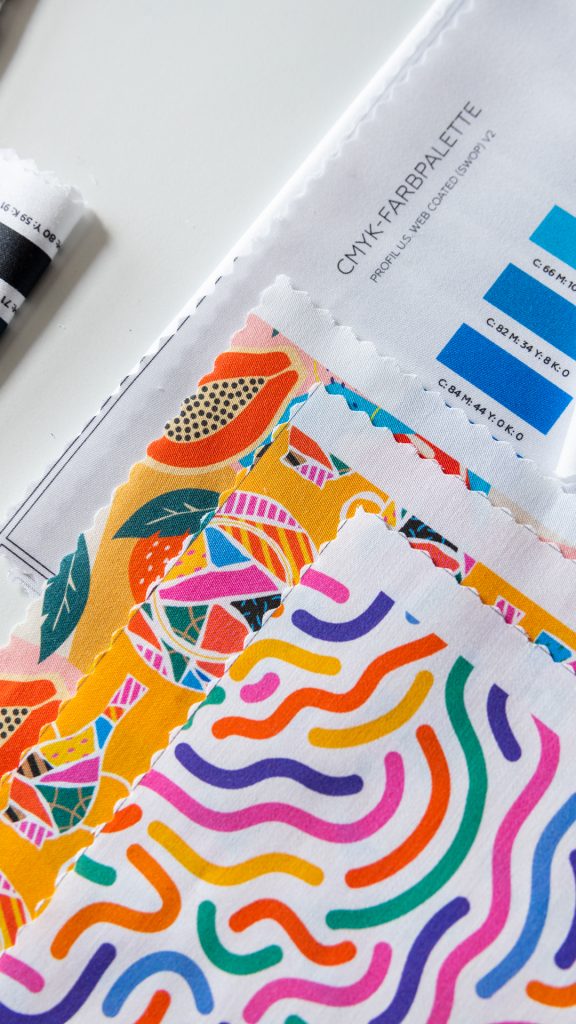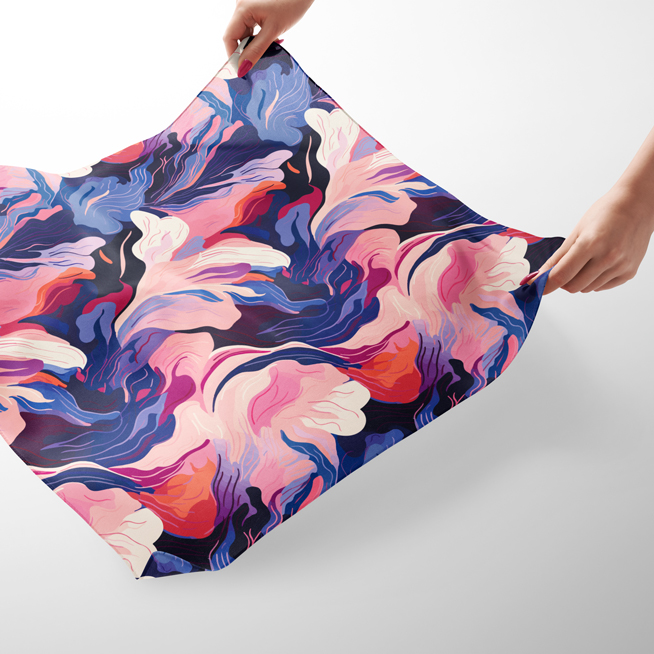What is the difference between satin and silk? These two fabrics are often confused with each other, but they have different properties and characteristic features. In this article, we will discover the main differences between them, what properties they possess, and how they can be distinguished from each other. Learn more to understand which fabric suits you better and why.
Table of Contents
- Satin and silk – what properties do they have?
- What is the difference between satin and silk?
- Which fabric is smoother – satin or silk?
- How to distinguish satin from silk?
Satin and silk – what properties do they have?
Satin and silk are two exceptional fabrics that differ not only in appearance but also in their properties.
Satin, known for its shiny finish, is characterized by a smooth surface that makes it pleasant to the touch. It is a fabric that is often chosen for luxury bedding and elegant clothing due to its classy appearance. However, despite its softness, satin may be less resistant to external factors. In contact with hot water, it may become distorted, shrink, or stretch, requiring special care during washing and use.
On the other hand, silk is known for its delicate, natural sheen and exceptional softness. It is a fabric that is more durable and resistant to external factors than satin. Silk is also more breathable and performs excellently in various climatic conditions. Furthermore, silk can be produced in various consistencies, from thin and delicate to thicker and more durable, making it a versatile fabric for various applications from clothing to interior decorations.
Therefore, although both fabrics may seem similar due to their shiny finish, they have different properties that should be considered when choosing the appropriate fabric for a specific project or application.

What is the difference between satin and silk?
The main difference between satin and silk is the nature of the fabric itself. Satin is a type of weave, while silk is a type of fiber.
Satin is a fabric created through a special type of weave that produces a smooth surface from silk, cotton, polyester, or other materials. This special weave gives satin its characteristic sheen and smoothness. It is a luxurious fabric, often used for elegant clothing, bedding, and interior decorations.
On the other hand, silk is a natural fiber derived from silkworm cocoons. The process of obtaining silk is more complicated and involves the breeding of silkworms and the precise processing of their cocoons. The result of this process is a material that is incredibly delicate, lightweight, and possesses a natural sheen. Silk is valued not only for its aesthetics but also for its thermoregulatory properties, which make it comfortable both in summer and winter.
It is also worth mentioning that satin silk can be made from silk, adding another level of subtlety and elegance to this fabric.
Which fabric is smoother – satin or silk?
One of the key factors that differentiate satin and silk is their smoothness. In terms of smoothness, silk is considered smoother than satin.
Silk, being a natural fiber, has an incredibly delicate structure that makes it extremely smooth and soft to the touch. Its silky surface is luxurious and pleasant for the skin, making it a popular choice for those seeking high-quality fabrics, especially in special occasion clothing or bedding.
On the other hand, satin is typically produced through a special type of weave that gives it a shiny and smooth surface. However, despite its shine and softness, satin may be slightly less smooth compared to silk. In some cases, it may also add more to the body, which may be desirable depending on the application but may also be less comfortable for some individuals.
In summary, when it comes to smoothness, silk usually outperforms satin. Silk has a delicate, silky surface that is incredibly pleasant to touch and makes the fabric very smooth. However, satin also has its unique features and may be preferred for its shiny appearance and ease of care. The final choice depends on personal preferences and the intended use of the fabric.

How to distinguish satin from silk?
Distinguishing satin from silk can sometimes be challenging because both fabrics may look similar, especially to an untrained eye. However, there are certain methods that can help identify these two materials:
- Observing the shine: Silk has a natural, subtle sheen that is more pronounced than the shine of satin. If the fabric appears to have an intense, artificial shine, it is likely satin.
- Touch: Silk is softer and smoother to the touch than satin. The delicacy and smoothness of silk are characteristic and difficult to replicate by other materials.
- Reaction to heat: When rubbed between fingers, silk usually warms up, while satin remains cool. This phenomenon results from differences in the materials’ structures and can help distinguish them.
- Checking the label: Many products made of silk have labels indicating the fabric composition. If possible, check the label to determine whether the material contains silk or not.
- Verification of price: Silk is usually more expensive than satin. If the product is relatively cheap, it is likely satin, while a higher price may suggest that it is silk.
In conclusion, satin and silk are not only about appearance but also about characteristic properties. When choosing between these two fabrics, it is worth considering not only their aesthetics but also their durability and comfort of use. Remember that each of them has its unique charm and application, which can perfectly fit our needs and preferences. Understanding the differences between them will allow us to make a wiser choice that will bring satisfaction and delight us with its quality.





